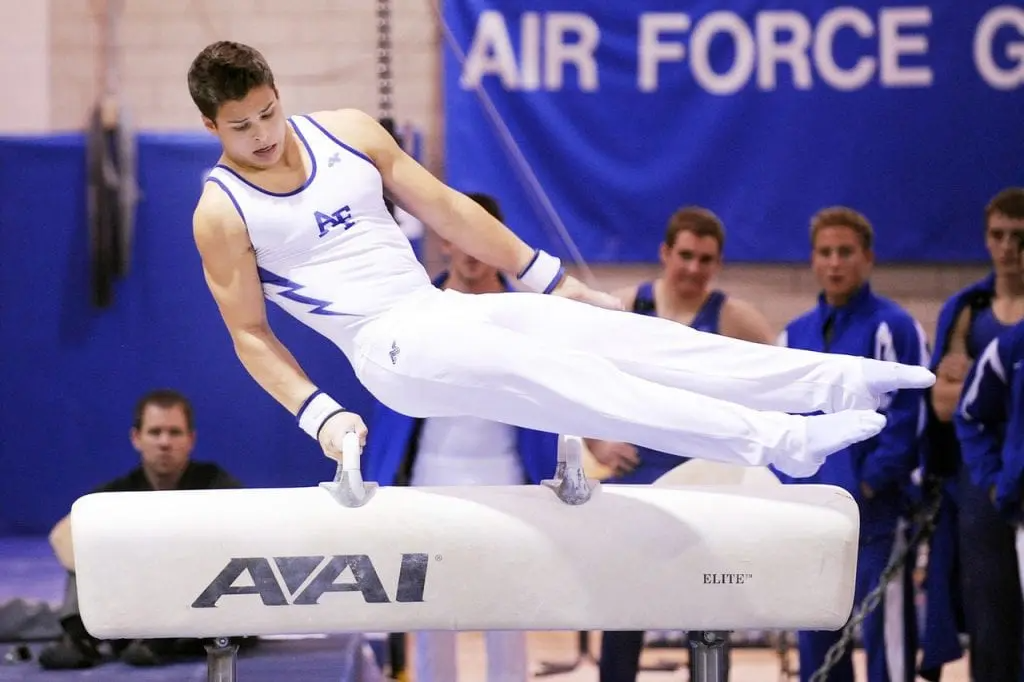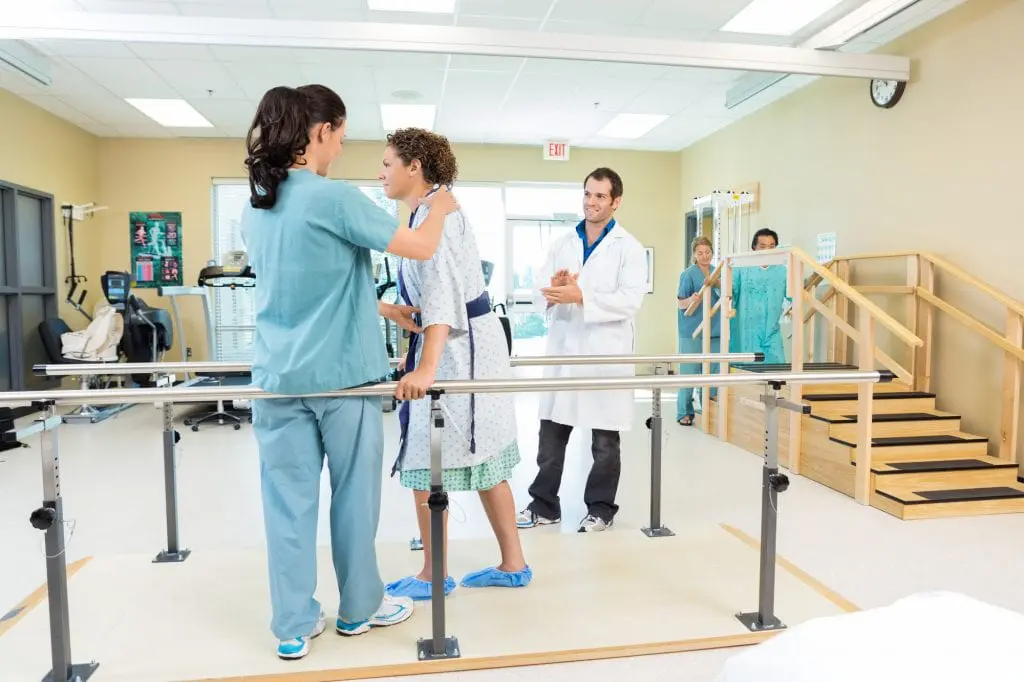While vestibular disorders can be the result of many problems, such as head trauma, viruses, and sinus and allergy issues, they are particularly common among older adults. In fact, 35 percent (approximately 69 million) all the U.S. adults over 40 have experienced a form of vestibular dysfunction and could benefit from vestibular rehabilitation and physical therapy.
There isn’t a cure for every type of vestibular disorder, but you can still live a full life with one. Vestibular rehabilitation involves a series of exercises that cater to each patients’ individual needs.
Some people regain the stability and functionality levels they had prior to their diagnoses, while others see a vast improvement. The rehab process may be challenging, but it certainly isn’t something you should overlook.
In this article, we will describe the rehab process and provide more information on vestibular disorders. Let’s get into it!
What Is Vestibular Disorder?
Your vestibular system is the link between your inner ear and your brain, which helps maintain your balance through all the tasks and actions you perform daily. It also controls some of your eye movements.
This system can become damaged by various injuries, diseases, and old age. In the event that damage occurs, you’re likely to be diagnosed with a vestibular disorder.
The symptoms vary between patients and may include:
- Dizziness and vertigo
- Spatial disorientation
- Trouble balancing
- Changes in cognitive function
- Vision problems
- Psychological changes
- Hearing loss
Vestibular disorders can be scary for sufferers. They may even have a hard time describing the way they feel.
In many cases, you might seem overly anxious, or be accused of seeking attention. Keep in mind that although the symptoms listed above are common, they aren’t the only issues you may experience with a vestibular disorder.
This is an illness that presents itself differently from patient to patient.
Is There a Cure?
Because there are several types of vestibular disorders, there isn’t a blanket answer to the question of whether it’s curable. However, most disorders are short-lived, but it depends on the cause.
For instance, if your vestibular disorder is the result of inflammation in the ear, it may last for a few days. In this case, you won’t need rehab, but antibiotics and rest.
However, other vestibular disorders can be long-term or even last a lifetime. This is can be true in patients who have Meniere’s disease. Although there is no cure, you can see a definite improvement with therapy.
Types of Vestibular Disorders That Can Be Fixed With Vestibular Rehabilitation
One of the reasons the symptoms vary is that the disorder itself varies. These are the vestibular disorders doctors see most often:
Benign Paroxysmal Positional Vertigo (BPPV)
BPPV can make you suddenly feel like you’re spinning or swaying. It develops when the calcium crystals in your ear move to another area they shouldn’t be in.
This will make your ear send signals to your brain that say you’re moving when you actually aren’t.
With BBPV, the treatment will include various head movements. These help the crystals return to the position they’re supposed to be in.
Labyrinthitis
Labyrinthitis is an inner ear infection. It causes severe inflammation of the ear.
This condition can harm your ability to balance and hear. But you may also have:
- Pus or other fluids leaking from your ear
- Nausea
- Fevers
- Ear pain
- Ear pressure
Treatment options can include steroids to help with the inflammation. Your doctor may also prescribe an antiemetic if you’re experiencing vomiting and dizziness.
If you have labyrinthitis that’s caused by bacteria, you may need to take antibiotics.
Vestibular Neuritis
If you have a viral infection like chickenpox or measles, you can develop vestibular neuritis. This health condition interferes with the nerve that sends sound and balance signals to your brain.
The most common symptoms are sudden dizziness along with nausea, vomiting, and difficulty walking. Your doctor will have to treat the virus that’s causing vestibular neuritis in order to cure it.
Meniere’s Disease
With Meniere’s disease, you will have sudden vertigo attacks paired with tinnitus, which can cause you to have a ringing, buzzing or roaring sound in your ears. You may also experience hearing loss or feel like your ear is full.
Meniere’s disease occurs when there is too much fluid in your ear. It may be also due to severe allergies, viruses, or autoimmune reactions. Its symptoms can worsen over time and even result in permanent hearing loss.
It’s rare that you will need surgery. But if you do, your doctor will have to remove the affected parts of the inner ear. This will improve your symptoms because the affected areas would have stopped sending incorrect messages to your brain.
If surgery is not required, some lifestyle changes can help you cope with and manage your symptoms. You’ll have to decrease your salt, alcohol, and caffeine intake. Your doctor will most likely prescribe medication to reduce the attacks.
Perilymphatic Fistula (PLF)
Perilymphatic fistula is identified by a tear or defect located between your middle and inner ear. Some people are born with it, while others develop it later in life.
This disorder can be caused by heavy lifting, trauma from a head injury, or barotrauma (pressure in the ear).
During surgery, doctors will plug the openings and tears with tissues from your outer ear.
How Vestibular Rehabilitation Works
If you suffer from any of these disorders, you may be interested in physical therapy and vestibular rehabilitation (VR). This form of treatment aims to reduce primary and secondary problems that come from vestibular disorders.
During your therapy appointments, you will perform exercises that help alleviate symptoms like:
- Extreme dizziness (vertigo)
- Lack of balance that causes falls
- Gaze instability
Because your sessions will be designed to help with your specific symptoms, rehab is very effective. Your treatments will be more specialized than generic.

Exercises during Vestibular Rehabilitation
The idea of performing exercises to help with an ear problem might sound a little strange. But we’ll walk you through the process.
Before your physical therapy program is designed, you will need to undergo a clinical examination. This will help your doctors pinpoint the problems you’re experiencing because of your vestibular disorder.
There are three main exercise methods that doctors usually prescribe. These, of course, are dependent on the results of your exam.
The primary methods are habituation gaze stabilization and balance training.
Habituation Therapy
If you tell your doctor you feel dizzy when you quickly move your head or change positions, they may prescribe habituation therapy.
It may also be recommended if you report an increase in dizziness when you’re in visually stimulating places. These may include places with shiny or patterned floors, or while watching action scenes in movies.
Habituation therapy focuses on treating the symptoms of dizziness that results from self-motion or visual stimuli.
Be mindful, though, that habituation exercise isn’t prescribed for spontaneous dizziness that doesn’t become worse with head movements or added visual stimuli.
Habituation exercises help reduce the dizziness you’re receiving by repeated exposure to your triggers. It starts by mildly or even moderately provoking the dizziness you feel with movement.
The added symptoms don’t last long. They’re usually temporary. Your doctor or physical therapist will make sure the symptoms have gone back to their baseline level before moving on to another set of exercises or tasks.
Over time, the intensity of your dizziness will decrease. This comes from teaching your brain to ignore the abnormal or even incorrect signals it gets from your inner ears.
Habituation therapy is uncomfortable. But patients who stick with it see great results.
Gaze Stabilization Exercises
Gaze stabilization exercises will help improve the control you have of your eye movements. Their purpose is to make sure your vision is clear while moving your head.
These exercises appeal to patients who can’t see clearly because things seem to bounce or jump around.
The bouncing or jumping can happen while reading or trying to point out specific objects from a distance. This symptom will be triggered the most when you’re in motion.
Your gaze stability can be improved with two types of eye and head exercises. The one you’re prescribed will depend on the type of vestibular disorder you have and its intensity.
The first gaze stability exercise we’ll talk about involves you fixating your eyes on an object while you move your head.
The head movements are repetitive and include up and down motions as well as back and forth. Each session of these exercises lasts a few minutes at a time.
The second gaze stability exercise is meant to have your vision and somatosensation work together. Gaze shifting and remembered target exercises employ sensory substitution to help improve your gaze stability.
These exercises promote improvement in patients who have very poor or zero vestibular function. This is mostly found in patients who have inner ear damage on both sides.

Balance Training Exercises for Vestibular Rehabilitation
When you perform balance training exercises, you will improve steadiness throughout your body. This will allow you to perform daily activities like exercising, working, and doing household chores.
The exercises involved in physical therapy are meant to address your individual balance needs. In order to be effective, they have to challenge you, but be safe enough so that you don’t fall in the process.
If you think you may fall, let your physical therapist know that the exercises are too difficult. The functionality the balance exercises will challenge are:
- Visual and somatosensory cutes
- Stationary positions
- Performing a task while balancing
- Coordination
Balance exercises will also help reduce some fall risks. For instance, they might help you walk on uneven ground or cobblestones in day or night.
These movements can also improve your bending, standing, turning, walking, and reaching abilities. Additionally, they can help you get back to doing more intense exercises like running, skipping, or jumping.
Continue Practicing at Home
This part depends on the type of vestibular disorder you have. Your doctor and physical therapist will go over things like whether it is curable or how long it may last for you.
With that said, many patients think physical therapy is the only instance in which they have to work on their balance training. That isn’t true, though.
You should continue to stay physically active between sessions. Don’t push yourself too hard. If you’re having a hard time walking, we’re not suggesting that you try going for long sprints.
In some patients, doing household chores like folding laundry is enough of a challenge.
During bouts of inactivity, your brain can essentially lose some of the things it learned during your physical therapy sessions. So, if you have a cold or something that puts you in bed for a few days, you may notice the feelings of dizziness begin to creep up again.
Luckily, this is pretty easy to alleviate by simply doing the exercises that were originally prescribed by your physical therapist. Most of the time, you will feel yourself becoming adjusted quicker during the second go around than you did the first time.
When your therapy sessions are all finished, it will still be important to keep yourself active, especially when it comes to your leg strength. This can help keep you from falling, even after becoming dizzy.
Many patients have found tai chi to be helpful for this purpose after they’ve stopped seeing their physical therapists. But since everyone isn’t the same, you should have a conversation with your doctor before you start an exercise program.
Get Expert Vestibular Rehabilitation Help
Do these symptoms sound like something you’ve been dealing with? Have you avoided treatment out of the fear of a huge medical bill?
We accept many types of insurance and have affordable physical therapy plans. Don’t continue to put your health or comfort on the backburner. Your symptoms and quality of life will only continue to worsen over time. Now it’s easier than ever to receive physical therapy with direct access.
Our friendly staff is fully trained to help you work through your vestibular disorder.
Also, you don’t need a prescription to participate in vestibular rehabilitation. Contact us to set an appointment or just come into our offices.
We accept walk-ins in all 14 of our locations.
.png)



